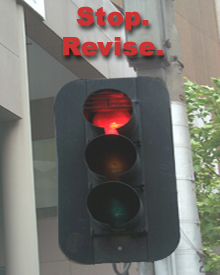Part-2 မွာ Project Management Methodology အေၾကာင္းေျပာခဲ့ပါတယ္။ အဲ့ထဲမွာ Project Management ေဆာင္ရြက္တဲ့အခါ အေရးႀကီးတဲ့ အဆင့္ ၄ဆင့္ ကို ေဖာ္ျပေပးၿပီး အဓိပၸာယ္ေတြ ေျပာျပေပးခဲ့တာေပါ့။ ဒီေန႔အတြက္ေတာ့ ေခါင္းစဥ္အသစ္မတက္ေသးပဲနဲ႔ အဲ့အေၾကာင္းကိုပဲ ျပန္ေႏြးၾကတာေပါ့။ ျမန္မာလို ဘာသာေတြျပန္လိုက္ေတာ့ မူရင္း အဂၤလိပ္အဓိပၸာယ္ေတြ မသိလိုက္မွာဆိုးလို႔ အဂၤလိပ္လို ေရးထားတဲ့ ကြက္လပ္ျဖည့္ေတြ၊ အေမးအေျဖေတြနဲ႔ ဒီ Introduction to Project Management နဲ႔ Project Management Methodology အေၾကာင္းကို ျပန္ေႏႊးၾကတာေပါ့ဗ်ာ။
×××××××××××××××××××××××××××××××××××××××××
သင္ခန္းစာ ျပန္လည္ေဆြးေႏြးျခင္း
Project Management ႏွင့္ပတ္သက္ သည့္ ေအာက္ေဖာ္ျပပါ ျပန္လည္ ေဆြးေႏြးမႈကို မိမိေလ့လာခဲ့သည့္ အတိုင္းအတာအတြက္ စစ္ေဆးၾကည့္ပါ။ ျပန္လည္ ေဆြးေႏြးျခင္းအတြက္ ေအာက္ေဖာ္ျပပါ အေမးအေျဖမ်ားကိုလည္း ေလ့လာၾကည့္ပါ။
×××××××××××××××××××××××××××××××××××××××××
- Introduction to Project Management
Project Management requires the organization of three things: (1)………….…, (2)………….… and (3)………….… . Project managers are concerned with how to get a particular job done. The jobs, or projects, coordinated by project managers have set activities that are required to meet stated (4)………….… . The first documented Project Management techniques were in the early 1900s with the development of the (5)………….… chart method. The principles of Project Management were refined further in the 1950s with the development of the (6)………….… Path Method (CPM) and the Program (7)………….… and (8)………….… Technique (PERT).
Answers:
(1) people, (2) equipment, (3) procedures, (4) objectives, (5) GANTT, (6) Critical, (7) Evaluation, (8) Review
- The Phases of Project Management
Project management is characterised by four specific stages. These distinct steps are: (1)………….…, Planning and (2)………….…, (3)………….… and, lastly, Monitoring and (4)………….… . During the Investigation phase the initial (5)………….… of the project takes place and goals and (6) ………….… are identified. At the end of this phase a project (7) ………….… is given to the project team or project manager. During the Planning and Design phase milestones and key time markers are identified to keep the project on (8) ………….… . It is also important during this phase to break the project into tasks or activities and to define the (9)………….…of each. The Production phase should provide a (10)………….… project, ready to be ‘handed over’ to clients. In the final phase of Project Management, the Evaluation and Monitoring phase, the (11)………….… of the project is assessed. The project is assessed based on (12) ………….… and (13) ………….…factors.
Answers:
(1) Investigation, (2) Design, (3) Production, (4) Evaluation, (5) commissioning, (6) aims, (7) brief, (8) schedule, (9) purpose, (10) completed, (11) success, (12) effectiveness, (13) efficiency
×××××××××××××××××××××××××××××××××××××××××
Questions and Answers
- What is the role of a Project Manager?
Project Managers concern themselves with how to get a particular job done. They organise people, equipment and procedures in an appropriate way to get a project completed in time and within budget.
- Why are Project Management Techniques used by organisations?
Project Management Techniques ensure that organisational objectives and system objectives are met in a timely, accurate, relevant and complete way. They provide the adequate control of people, resources and procedures and clearly identify tasks that must be completed and the desired completion time.
- When were the first Project Management Techniques documented?
The first documented techniques were in the early 1900s with the development of the GANTT chart method.
- Project management methodology has four distinct phases. What are they?
Phase 1: Investigation, Phase 2: Planning and Design, Phase 3: Production,
Phases 4: Monitoring and Evaluation
- What does Phase 1, the Investigation phase of Project Management, involve? Who undertakes this phase?
This phase involves the initial commissioning of the project, the identification of initial aims and goals and investigation into the possible way the project can be completed. The Investigation phase is undertaken by top-level management or strategic planners.
- List four steps in Phase 2, the Planning and Design Phase of Project Management.
Choose from any of the following:
- Defining the exact purpose of the project and clearly defining goals
- Breaking the project into tasks or activities and defining the purpose of each
- Estimating the shortest and longest possible time required for each activity
- Identifying milestones and key time markers in the project that keep the project on schedule
- Determining the sequence of each activity and any constraints affecting the sequence
- Deciding which activities should be completed before others can commence
- Identifying activities that can be done simultaneously
- Assigning resources, people, materials and equipment to activities
- Costing of resources
- Drawing up a calendar of events
- What does Phase 3, the Production Phase of Project Management involve?
This phases involves: providing resources, completing the set activities, monitoring, controlling and recording the progress of the project on a GANTT chart, comparing current progress to the planned schedule, updating and refining the schedule as required and monitoring resources to ensure there are no problems meeting the budget.
- In the Evaluation and Monitoring phase of Project Management what questions might a Project Manager address?
The Project Manager might address issues of quality asking questions such as: How well it has the project met the objectives? Is the final quality of the product satisfactory? The Manager might also address issues of cost: Did the project stay within the budget specified? Lastly issues of time would be considered: Did the project finish on or before the specified date? Was it the shortest possible time for the project?
×××××××××××××××××××××××××××××××××××××××××



One thought on “Project Management (Alison.com) – Part 3”